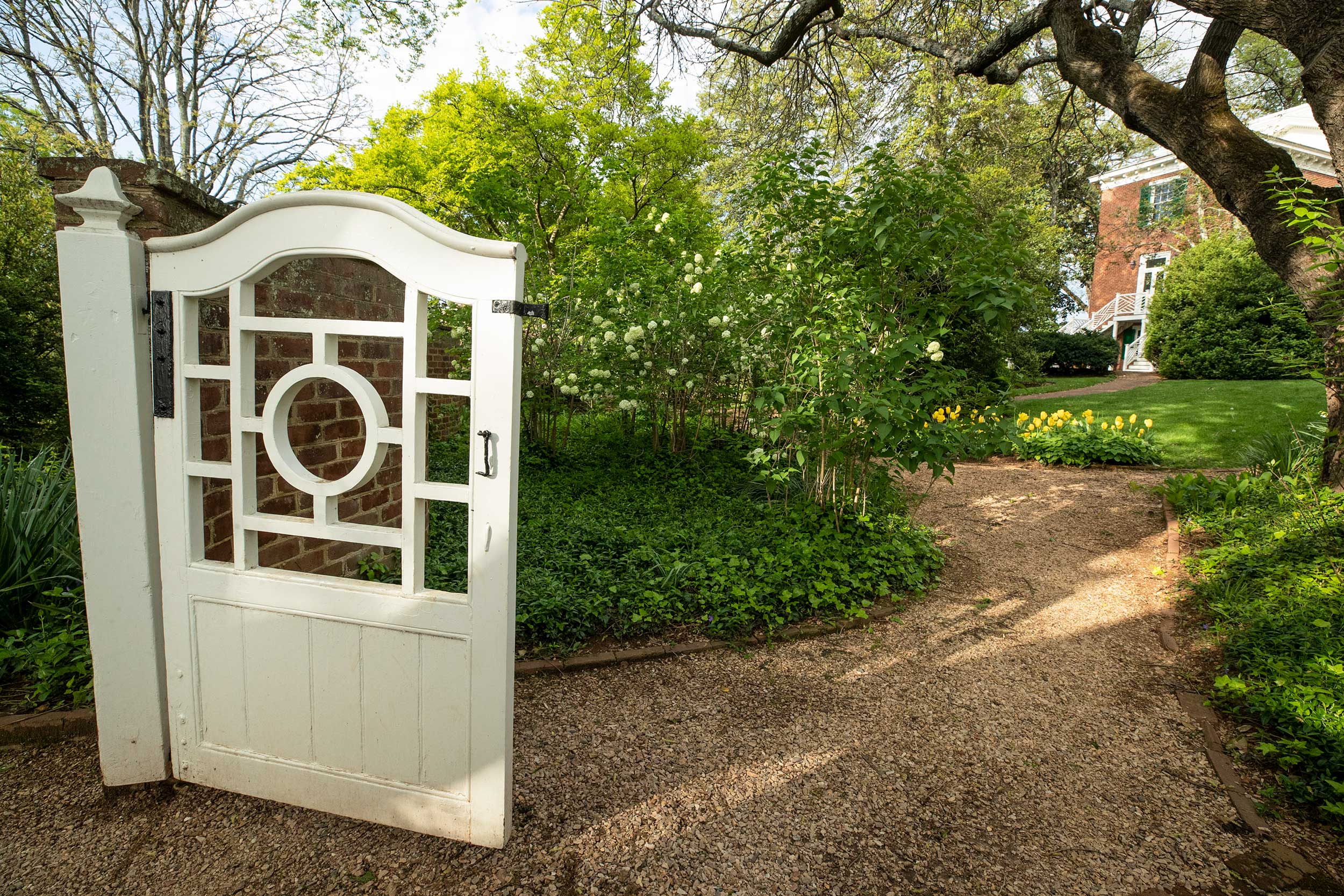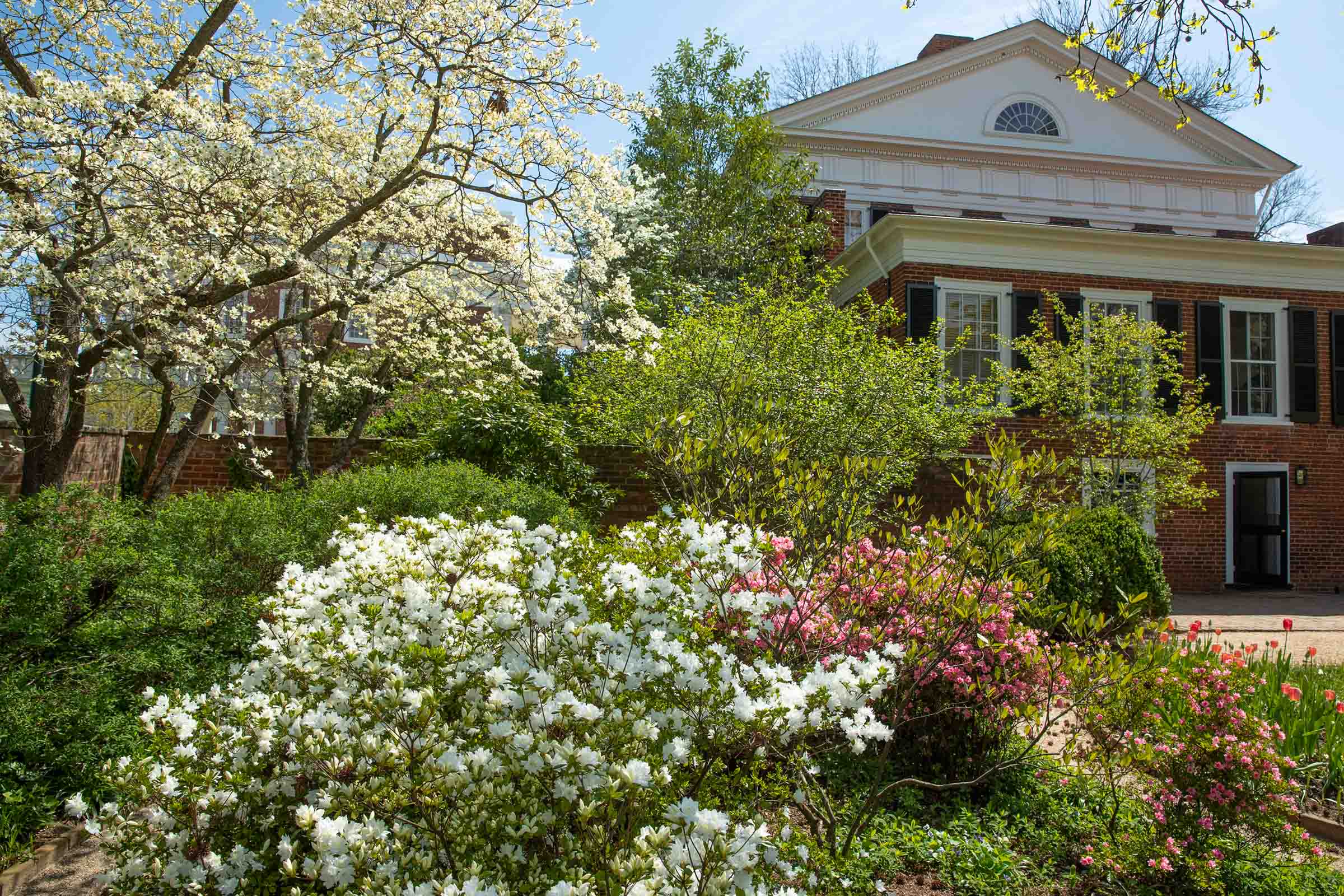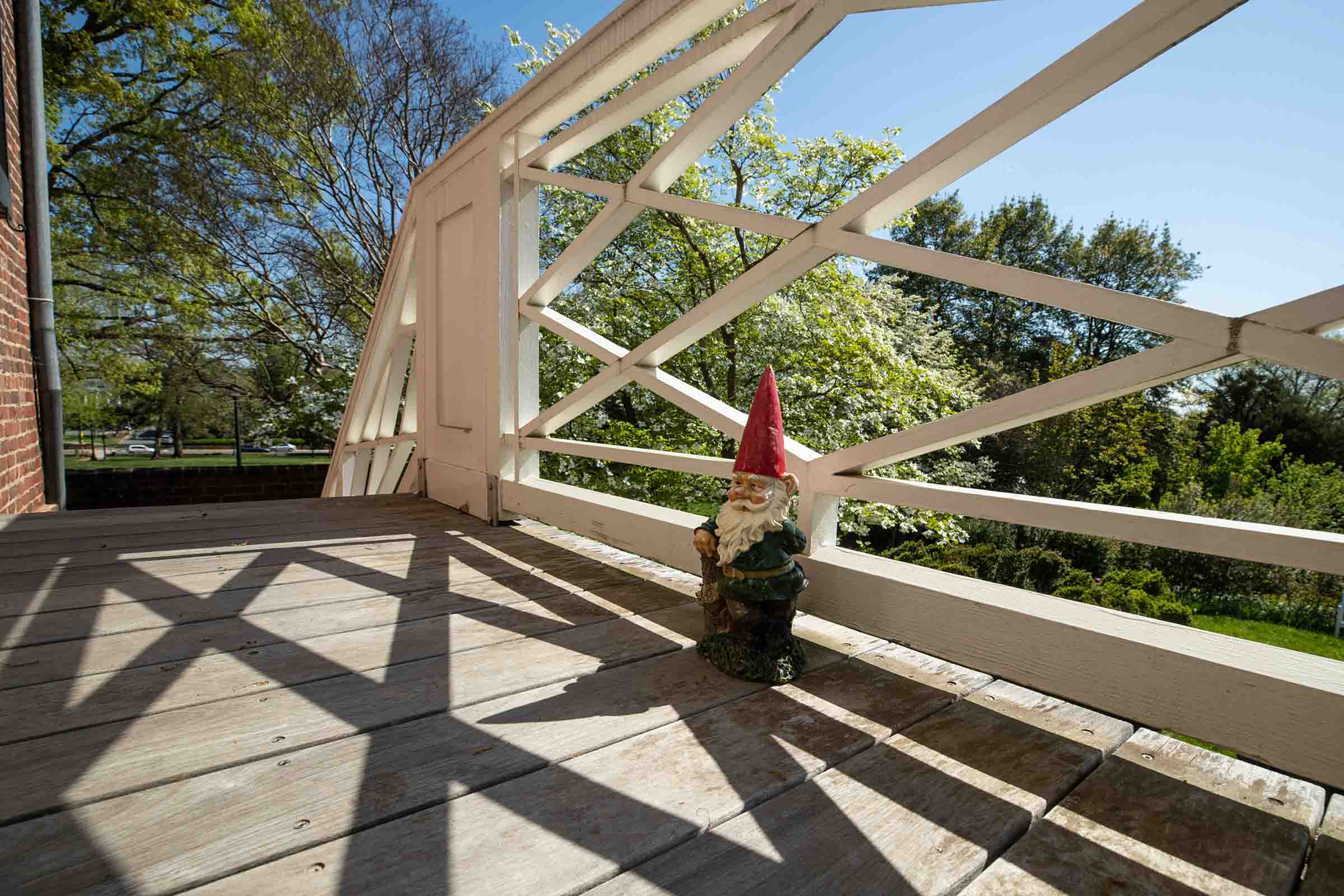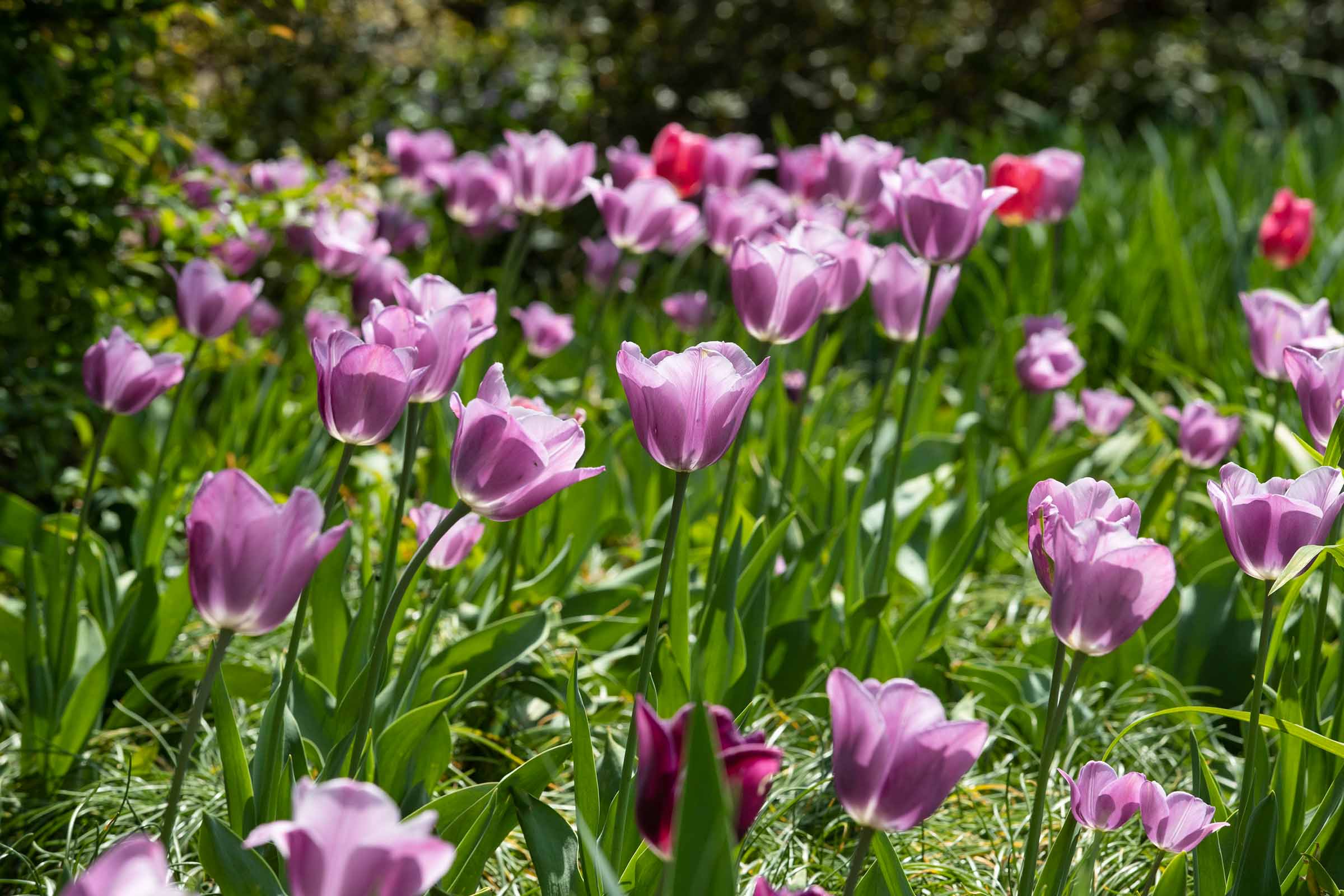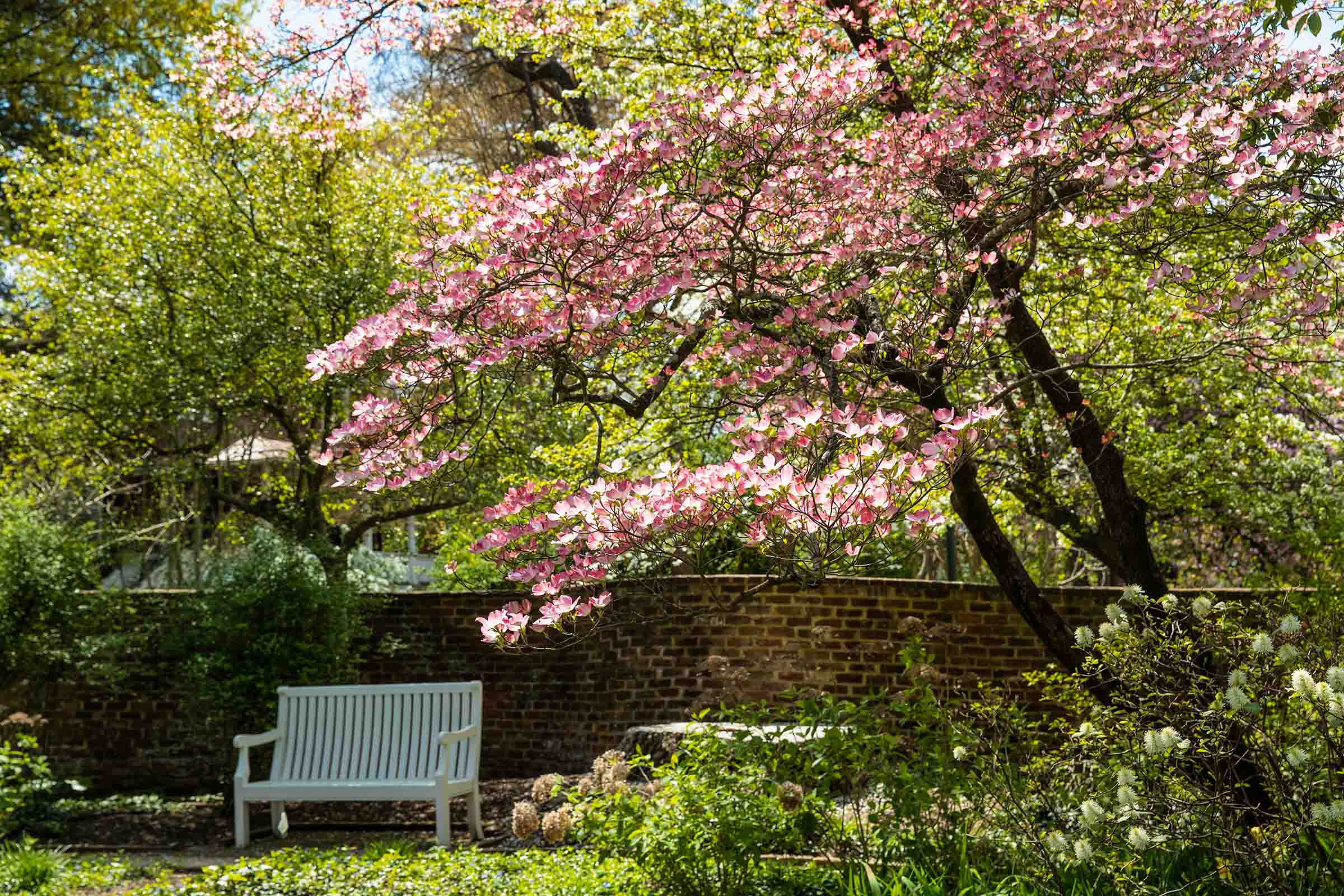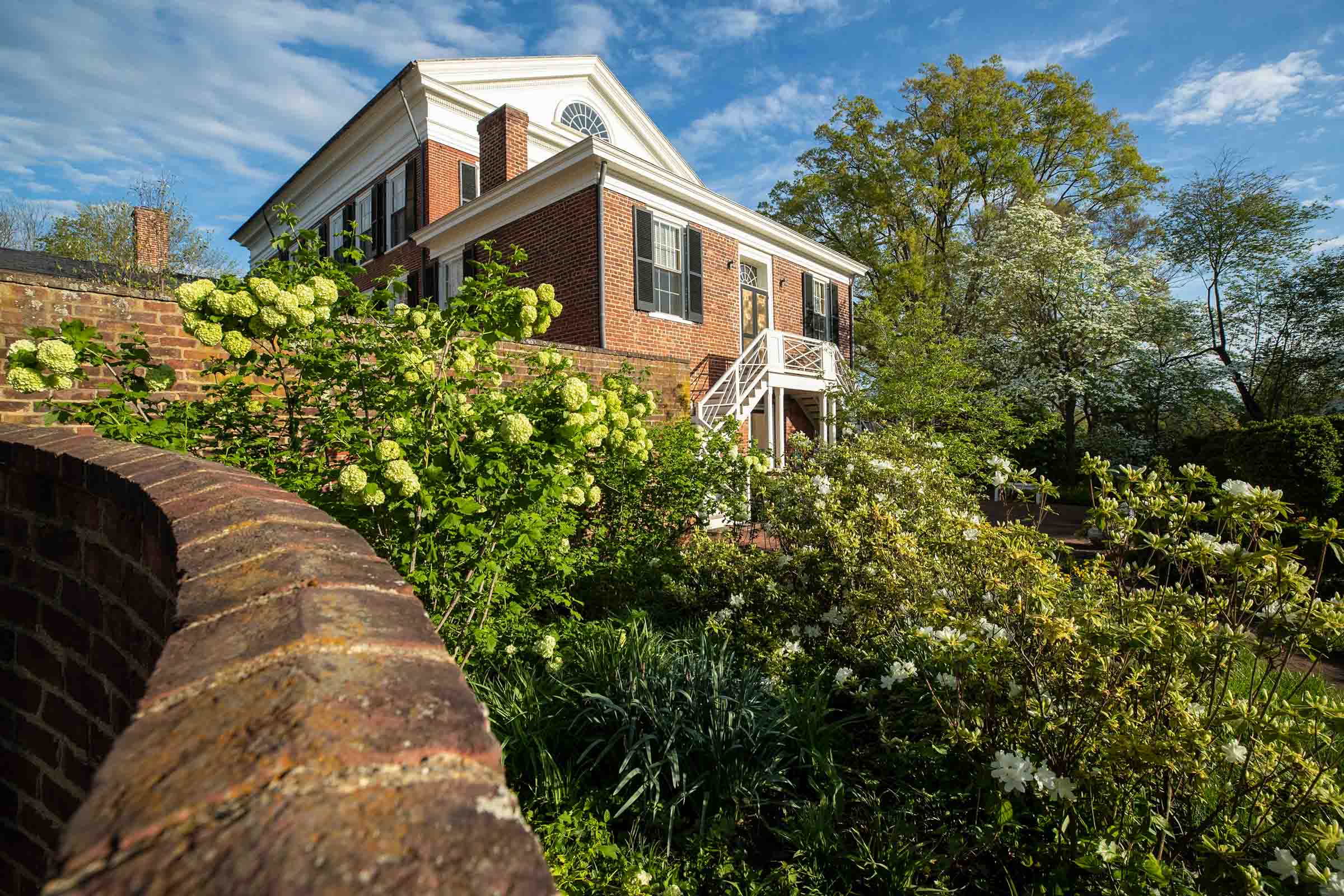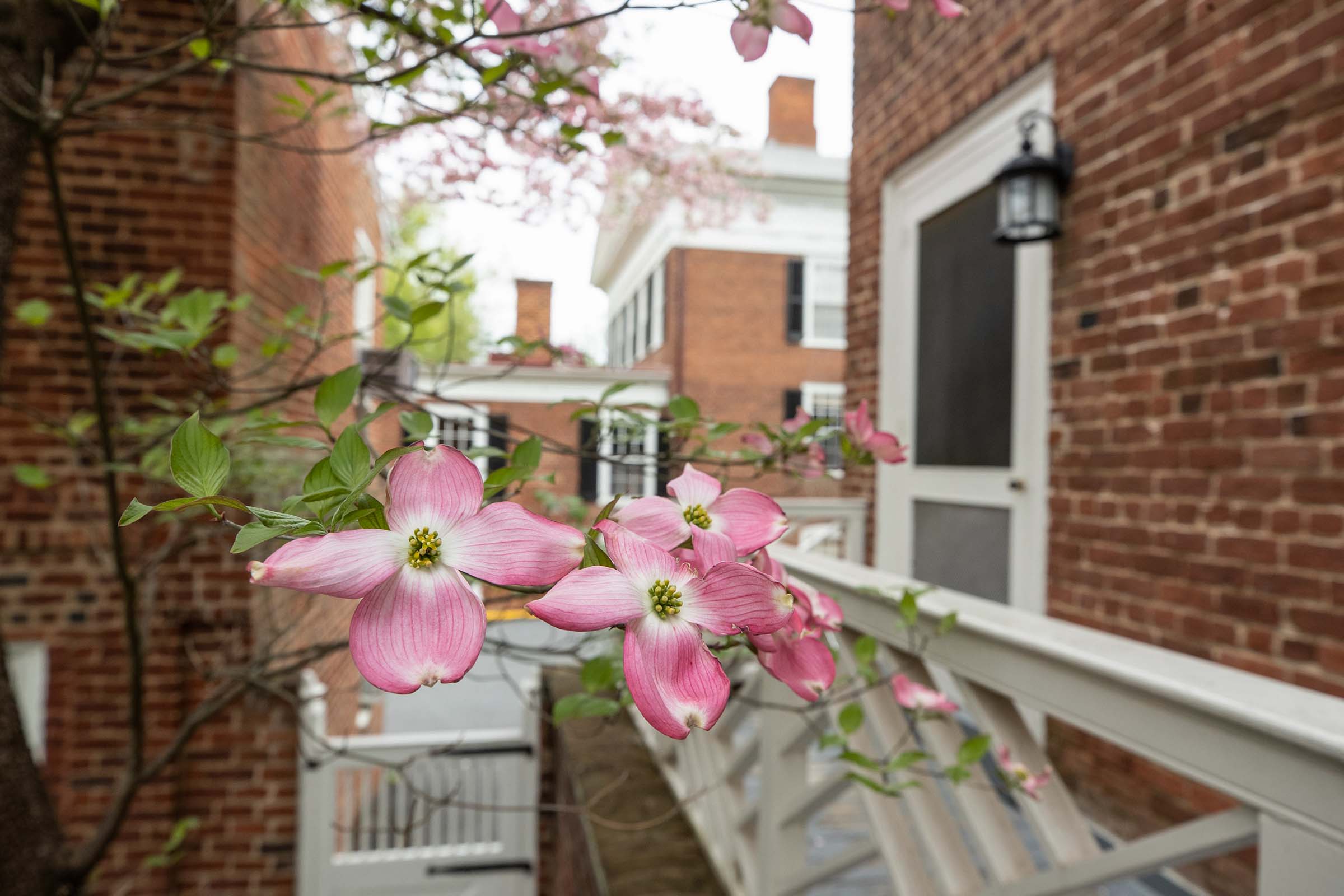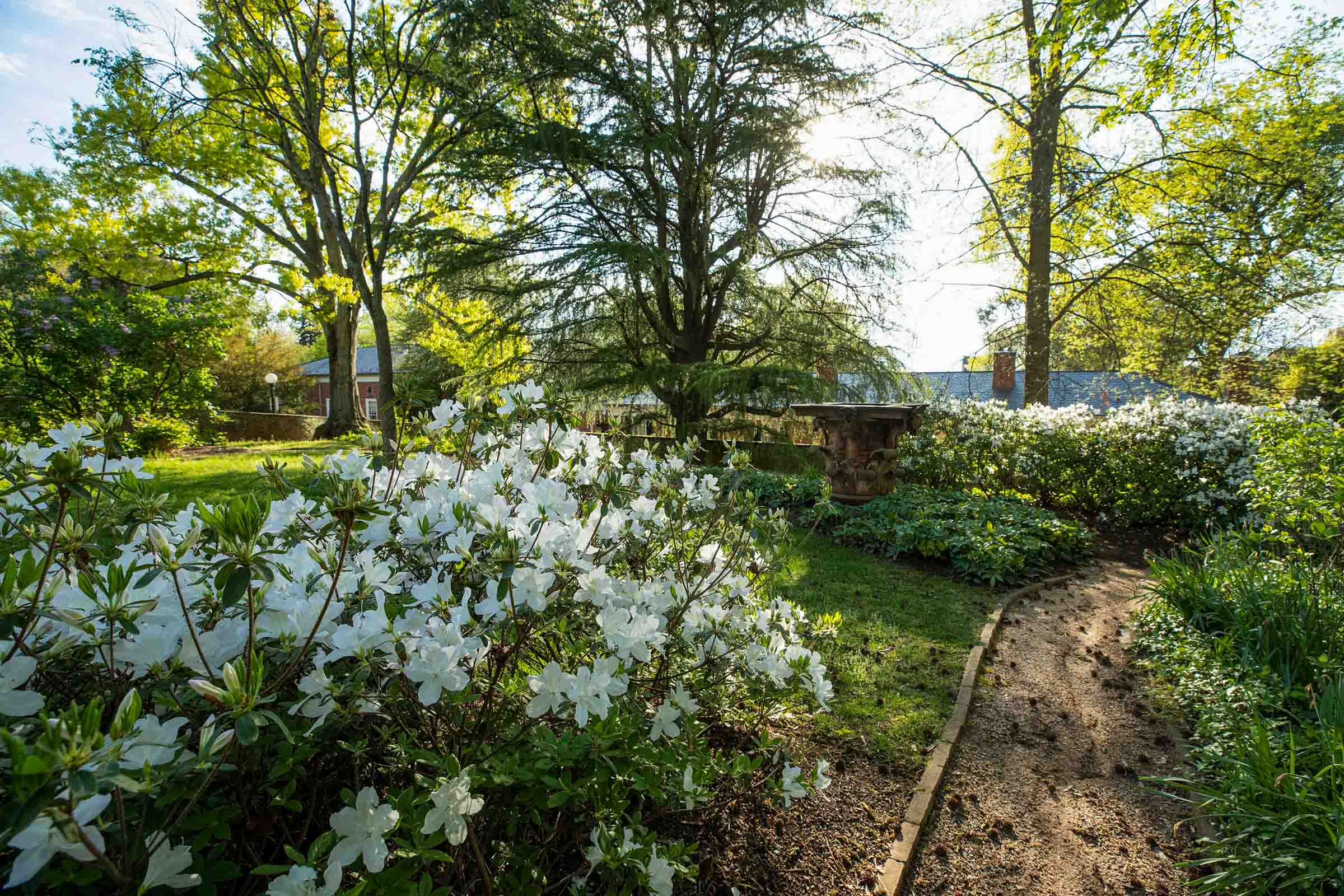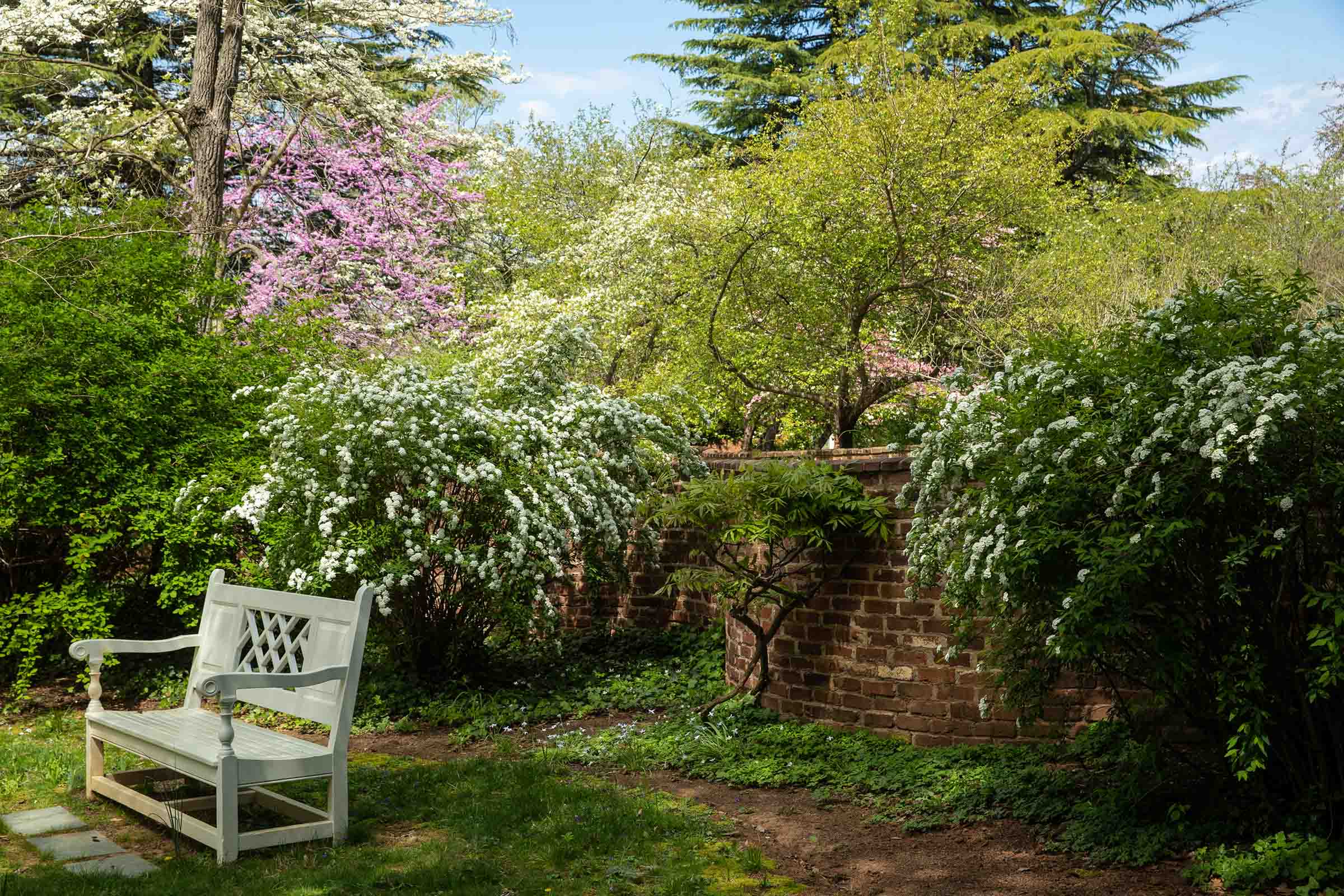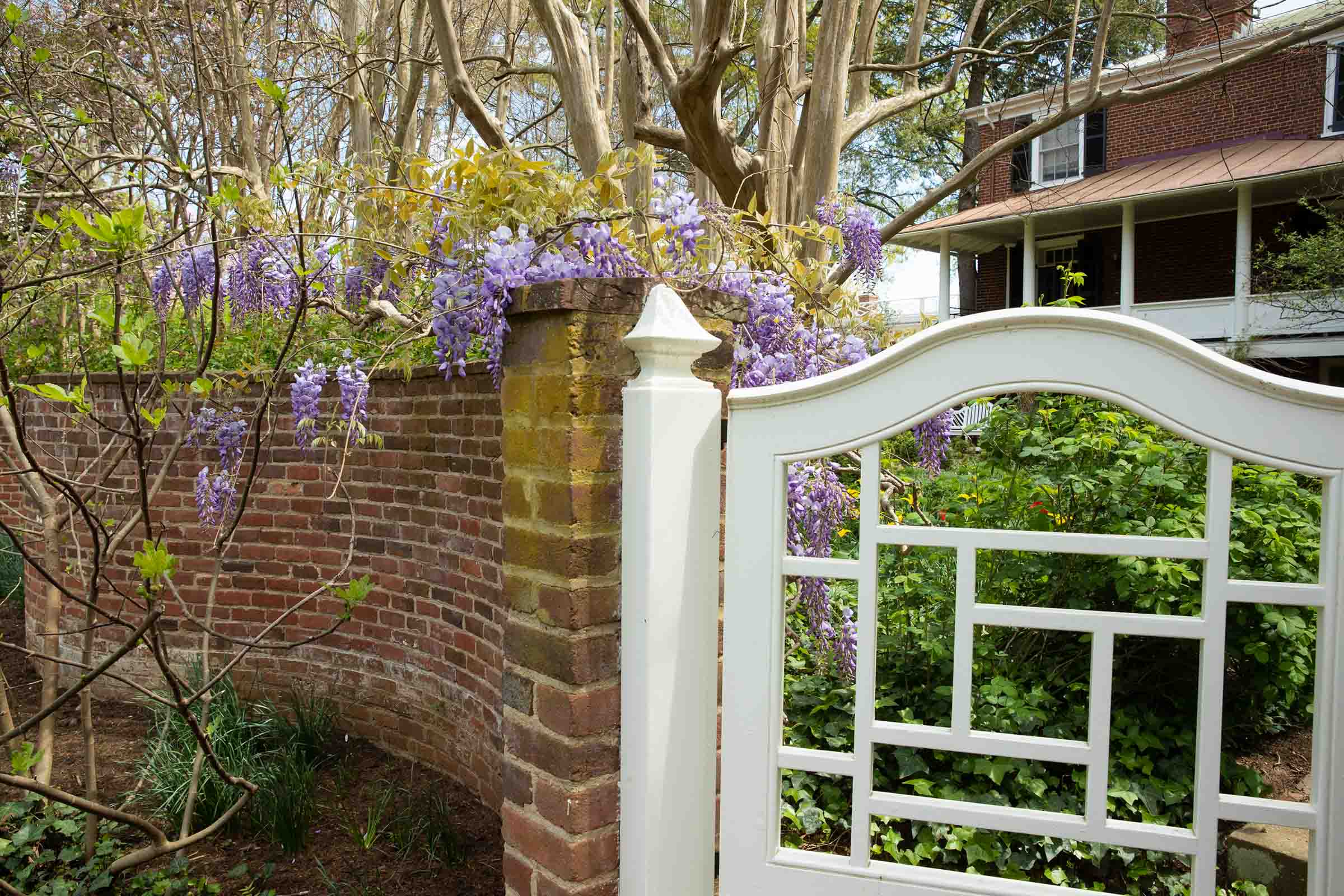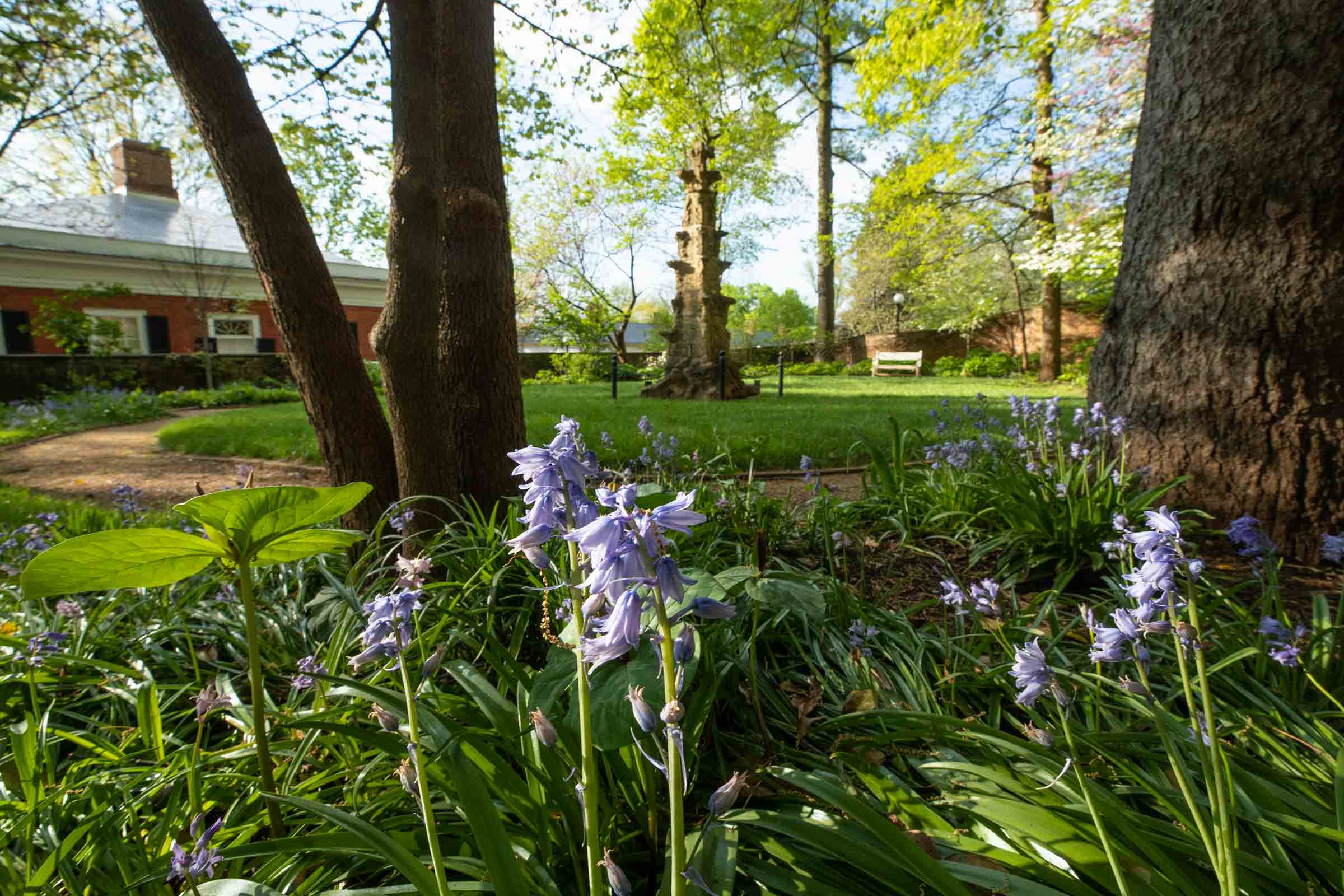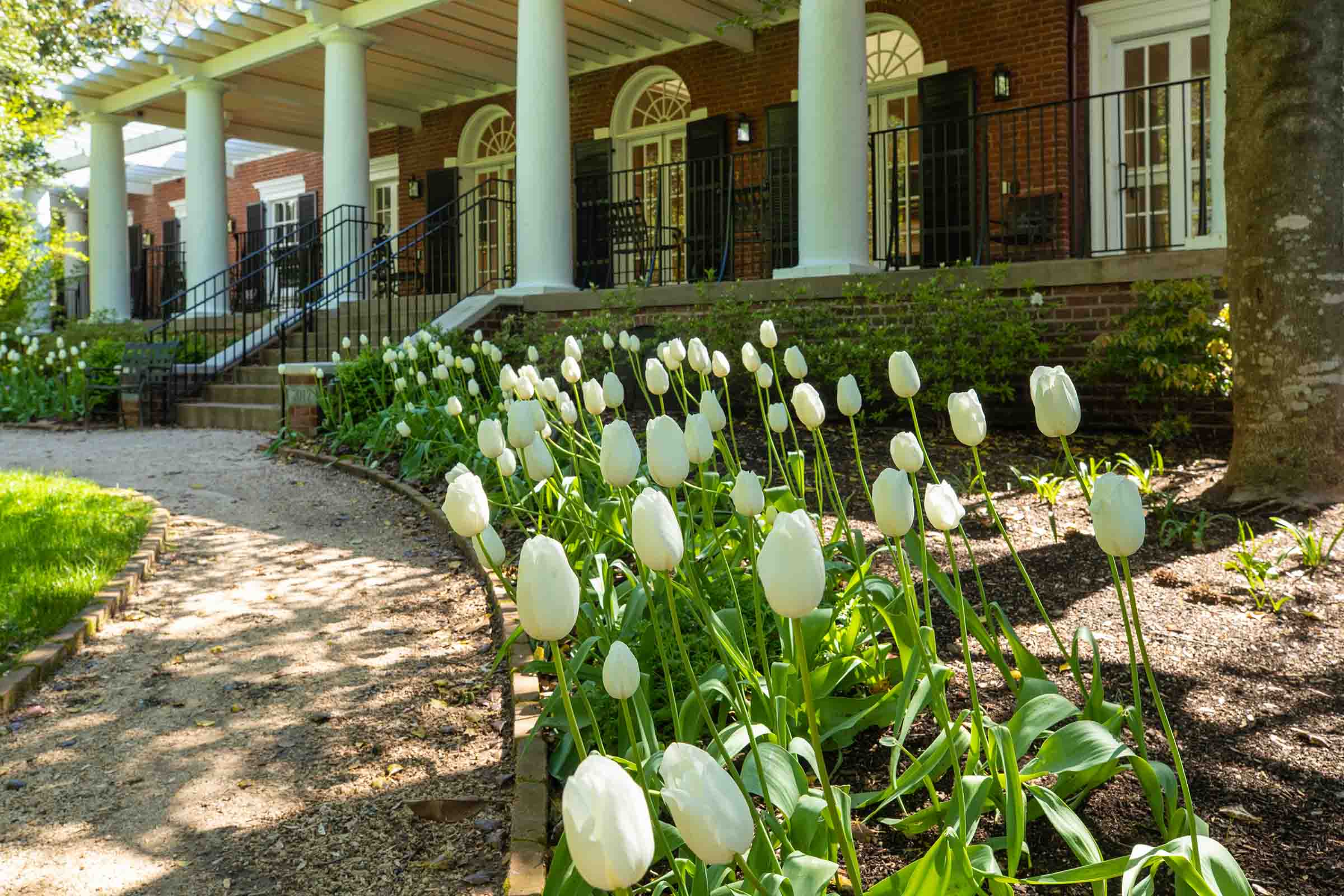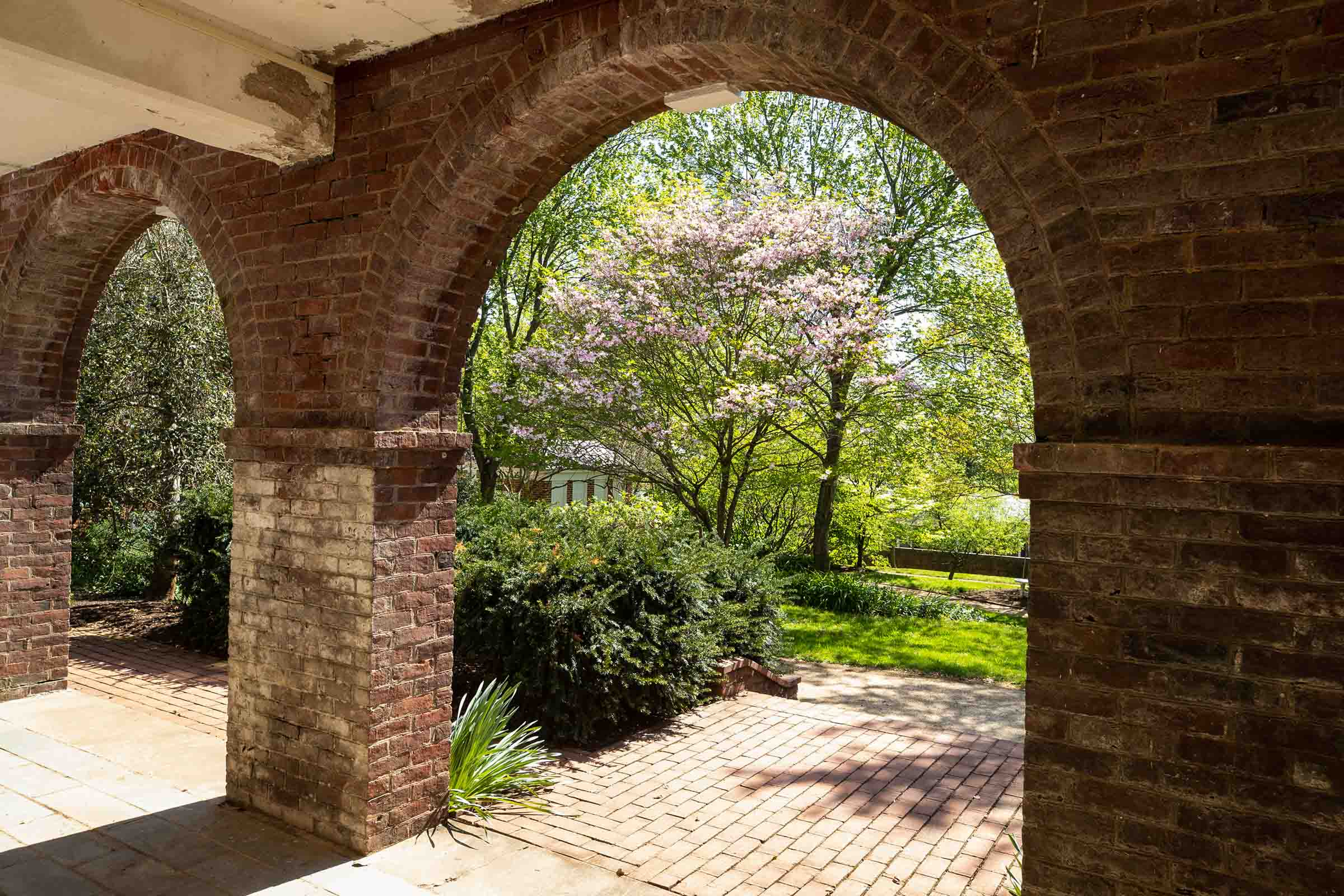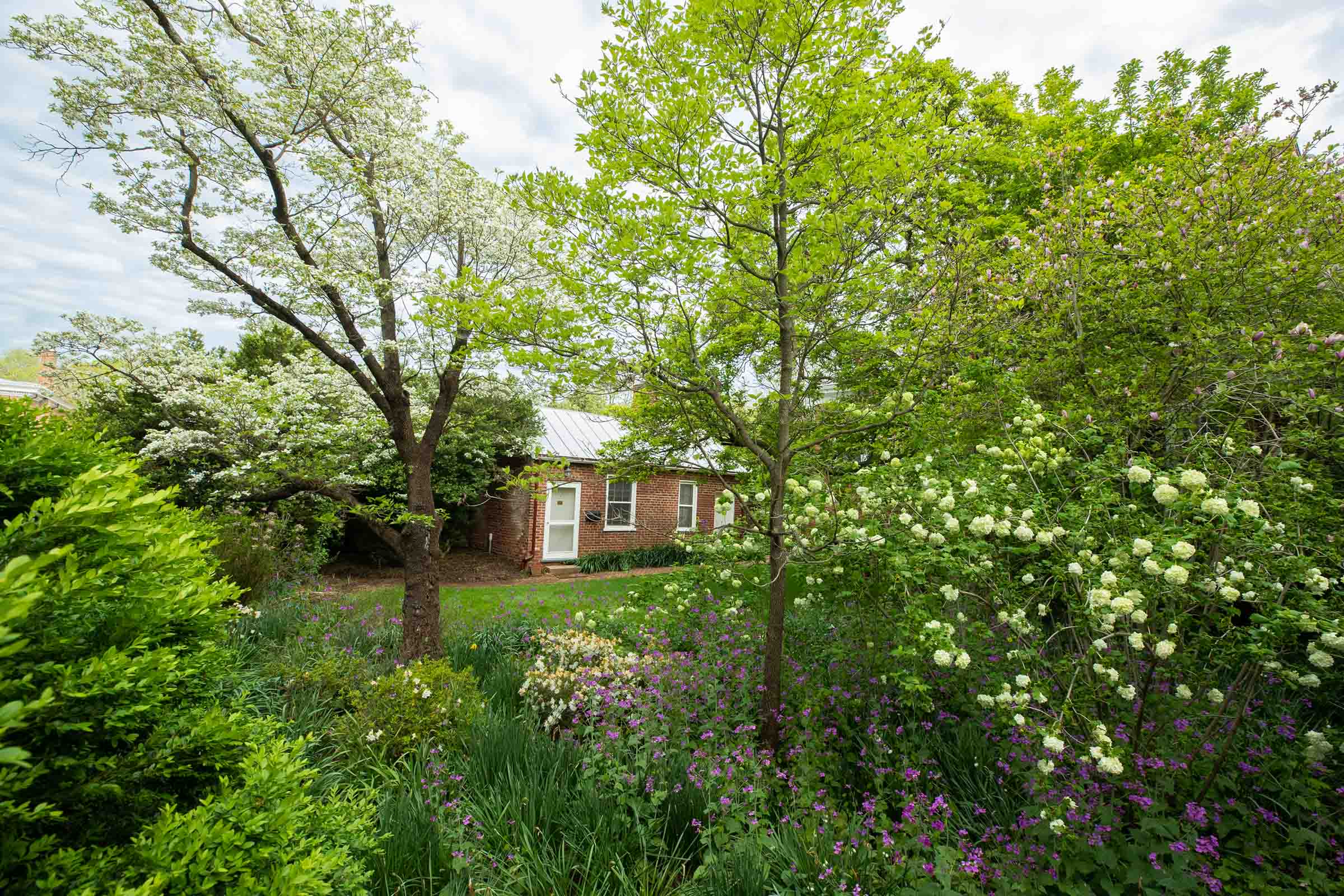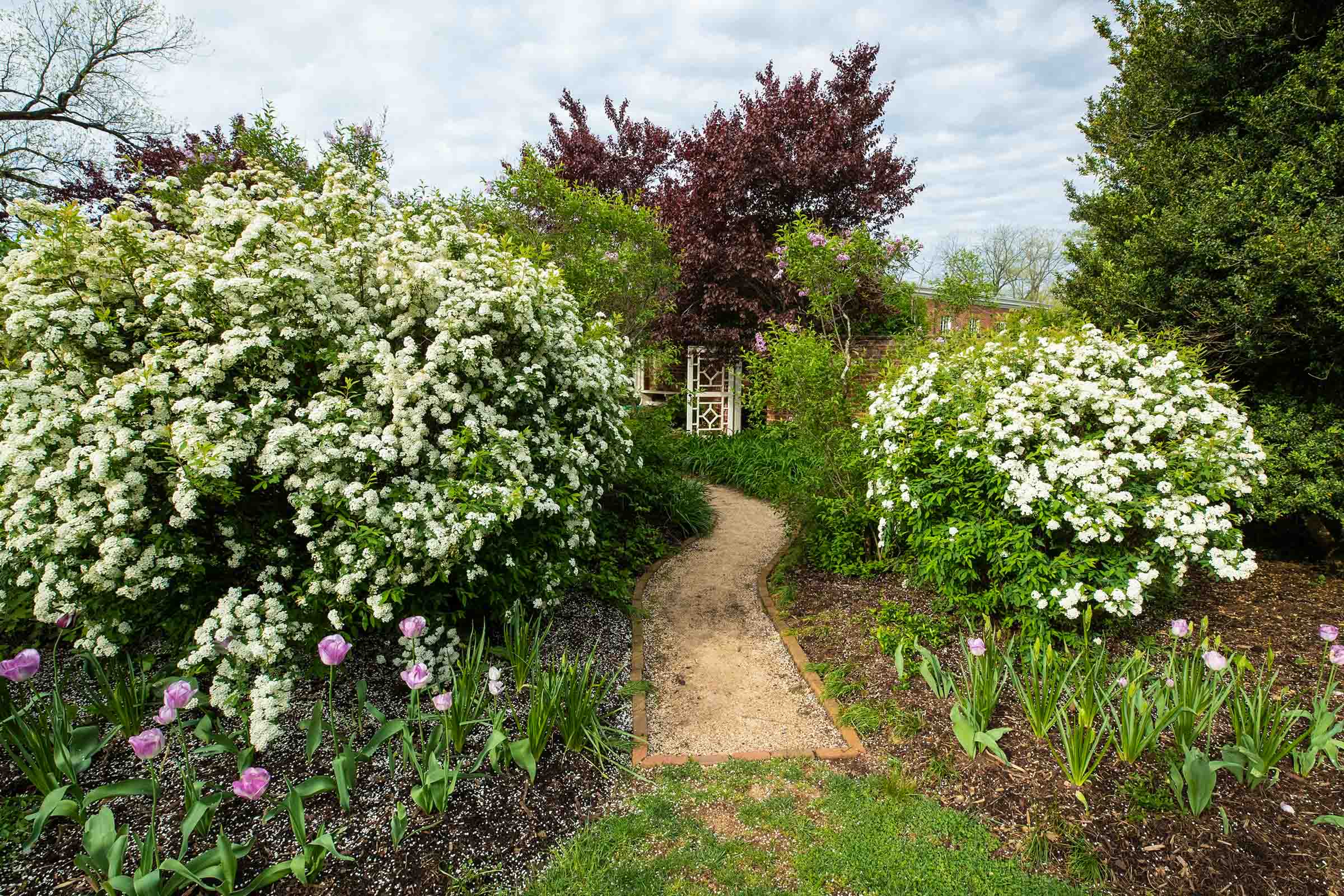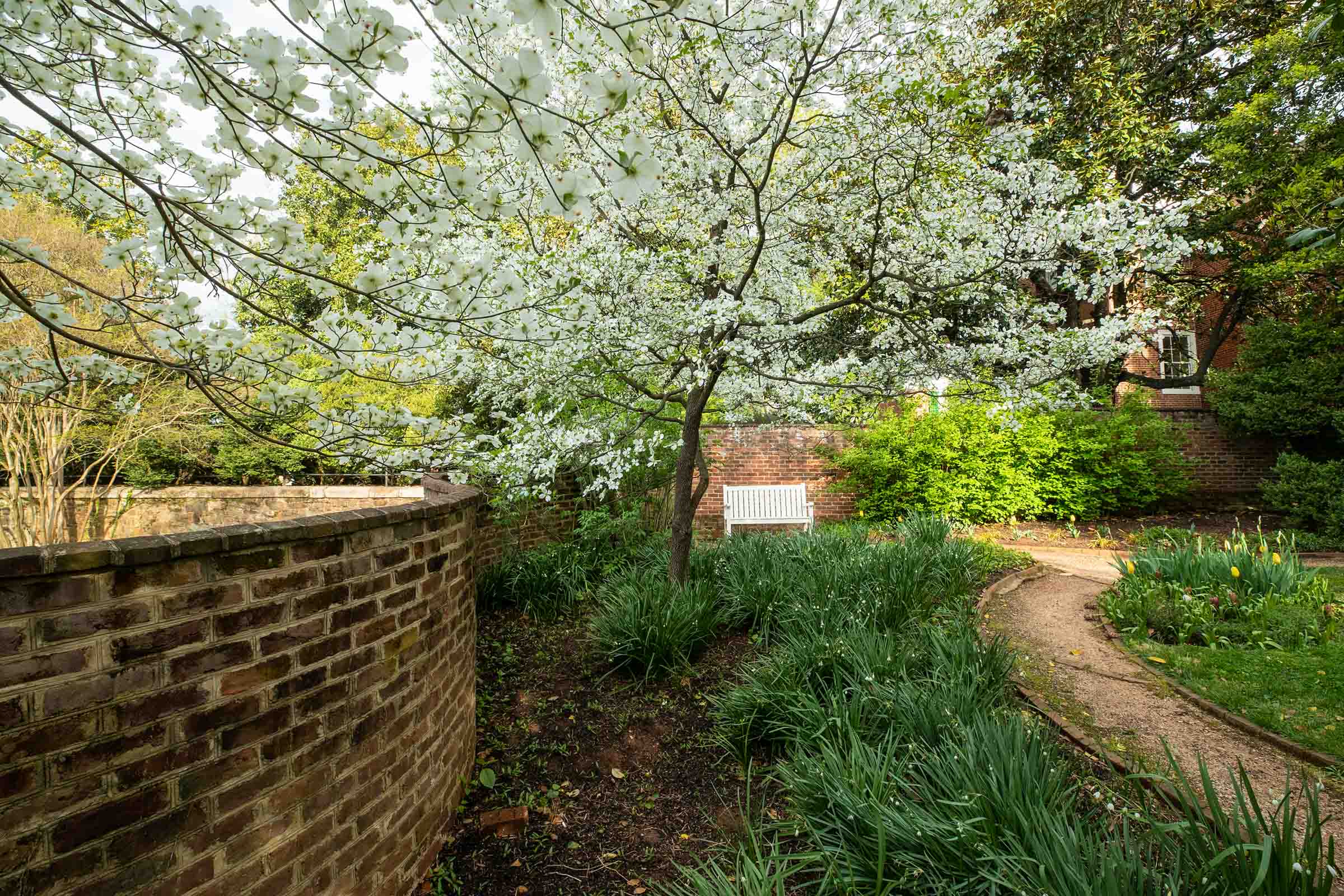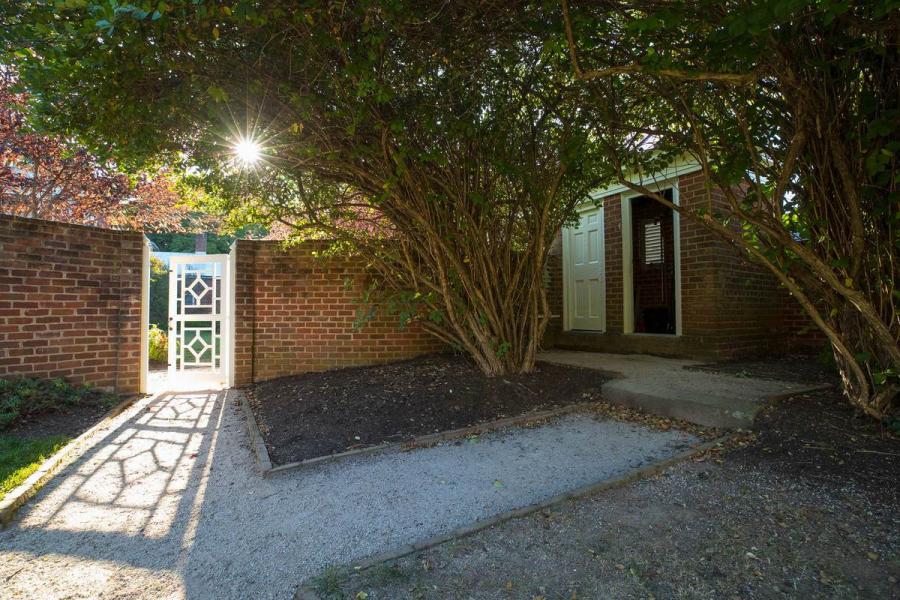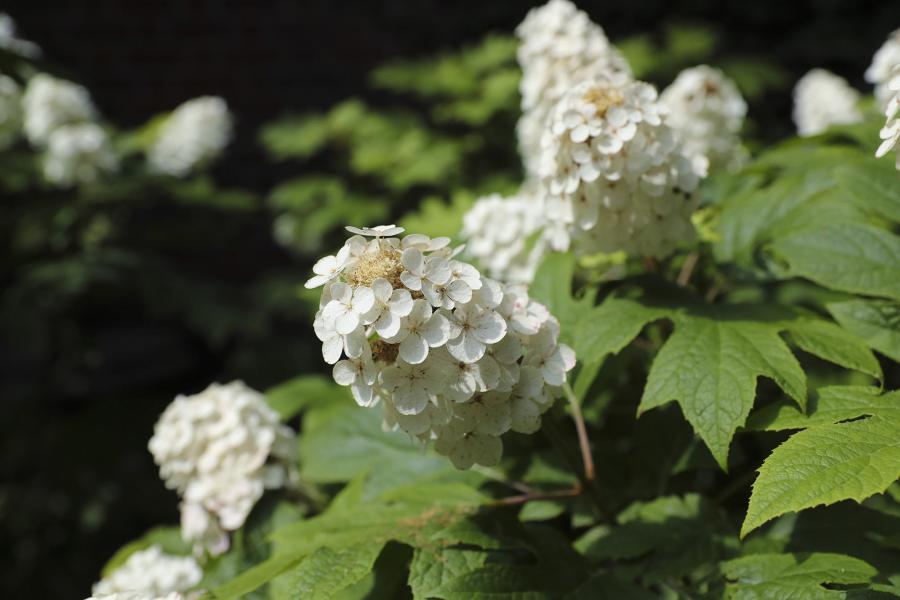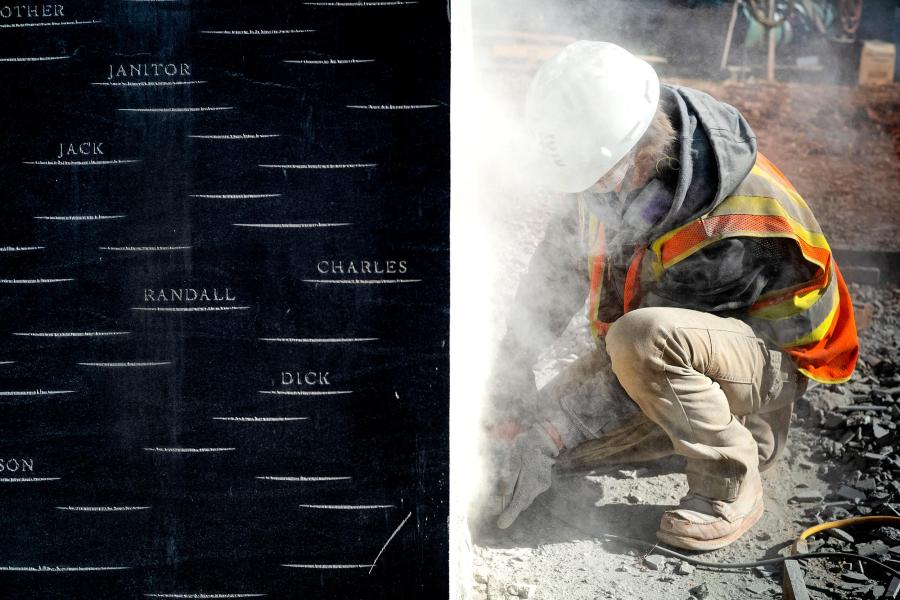Every year, the Garden Club of Virginia showcases the best of Virginia’s gardens in its annual Historic Garden Week. Figuring prominently are the historic pavilion gardens at the University of Virginia, which are opened for guided tours and lectures as part of the celebration every year.
UVA’s gardens, located behind the 10 Lawn pavilions, were a part of Thomas Jefferson’s original design for the Academical Village. But the spaces, explored in recent years through projects such as Jefferson’s University – Early Life, originally functioned as closed-off workyards where enslaved people maintained and supported the University.
The present-day pavilion gardens were designed in the 1950s and ’60s as a gift from the Garden Club of Virginia, using plans created by landscape architects Alden S. Hopkins and Donald H. Parker.
With 2020’s Historic Garden Week events cancelled due to the COVID-19 pandemic, the organization is finding new ways to bring the gardens to visitors through social media posts and gardening tips.
For flower enthusiasts currently sheltering in place, here is our virtual tour of UVA’s pavilion gardens.
